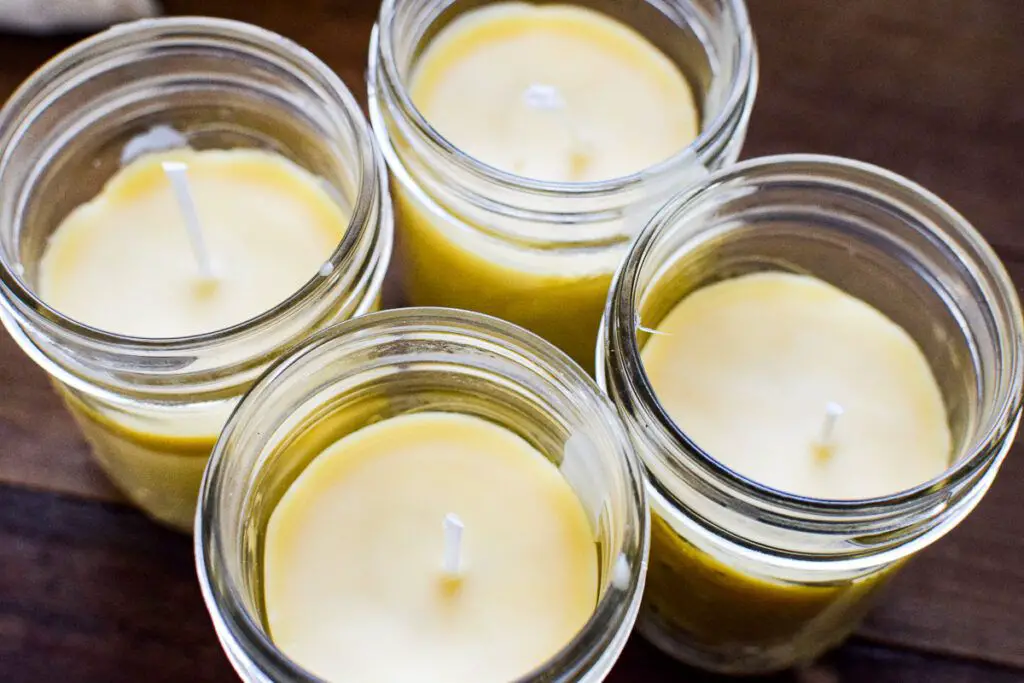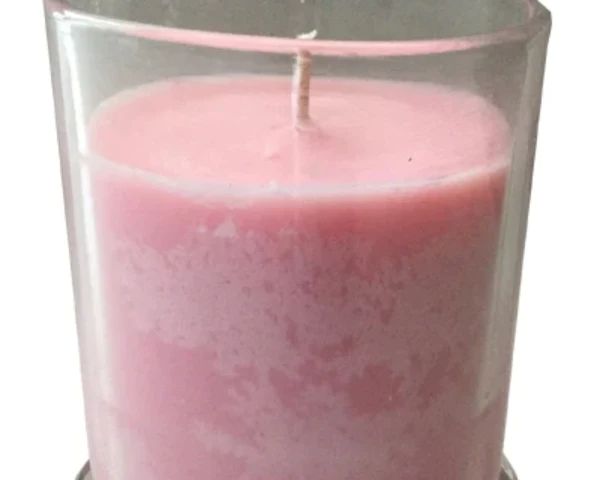What Candle Wax Can You Use On Your Body?
Body candles, also known as container candles, are candles that are poured into some type of container or holder. The wax used in body candles comes in many varieties, each with their own properties and uses. Some of the most popular types of waxes for body candles include beeswax, soy wax, coconut wax, palm wax, paraffin wax, and gel wax. The wax you choose will depend on factors like scent throw, burn time, moisture resistance, and desired effect on skin.
When used on the body, certain waxes can provide benefits beyond basic illumination. Beeswax and soy wax are often used for massage candles because they melt at a lower temperature that usually won’t burn skin. Coconut wax contains nutrients that moisturize skin. Gel wax candles are ideal for containers because they release from their mold easily. Paraffin wax has a long burn time but is not recommended for direct skin contact.
This article provides an overview of the most common candle waxes and key considerations when using them on your body. It covers practical factors like burn properties as well as skin care benefits of different waxes. With this guide, you’ll be able to select the ideal wax for your body candle needs.
Beeswax
Beeswax is a natural wax made by honey bees. It has many benefits for use in body candles:
Pros:
- Beeswax is a natural, organic product that comes straight from honeybee hives (https://www.greenerlyfe.com/blog/pros-and-cons-of-beeswax-candles-we-review-the-facts/).
- It has a warm, honey-like scent that is subtle and pleasant.
- Beeswax moisturizes and softens skin as it melts due to containing vitamin A.
Cons:
- Beeswax is more expensive than other candle waxes because it requires many worker bees to produce just a small amount (https://thehomeintent.com/benefits-of-beeswax-candles/).
- Availability can be limited since beeswax comes from beekeepers.
When making candles with beeswax, look for 100% pure beeswax rather than blended varieties. Beeswax has a high melting point, so combining it with oils can improve meltability. Store beeswax candles properly in a cool place to help preserve their scent and burn time.
Soy Wax

Soy wax is a popular candle wax made from hydrogenated soybean oil. It has both pros and cons to consider:
Some of the pros of soy wax include that it’s affordable and versatile. Soy wax is cheaper than beeswax and other natural waxes, making it budget-friendly for candle making. It’s also versatile to work with – soy wax can be blended with other waxes and holds both fragrance and colors well.
However, one of the cons is that soy wax is not as natural as other options, since it goes through hydrogenation. The hydrogenation process improves the burn quality but reduces the natural soybean oil scent and benefits. Still, soy wax remains a popular eco-friendly option over paraffin wax.
When sourcing soy wax, look for products made in the USA from non-GMO soybeans. Test waxes from different manufacturers, as quality can vary. Use lower jar temperatures and cool candle jars before pouring to prevent frosting.
Overall, soy wax candles offer an affordable, customizable option. Just keep the pros and cons in mind when selecting waxes for your candle making.
Coconut Wax
Coconut wax is made from coconut oil. It has become popular in recent years as an alternative to paraffin wax. Coconut wax contains a high oil content, which allows it to hold more fragrance oil and burn longer than paraffin wax candles (source).
The natural ingredients in coconut wax also produce less soot and smoke compared to paraffin.
A downside to coconut wax is that it has a lower melting point than paraffin, so it can only hold certain types of fragrances. Floral and fruit scents work best in coconut wax. Spicy, musky, and pine fragrances are difficult for coconut wax to hold onto (source).
When using coconut wax, it’s advised to source organic, non-GMO coconut wax for the highest quality and lowest toxin content. Blending coconut wax with other natural waxes like soy or beeswax can provide an optimal burn experience (source). Coconut wax makes an excellent base for those seeking natural, non-toxic candle-making options.
Palm Wax
Palm wax is derived from the fruit of palm trees. It has become a popular candle wax due to some advantages over other waxes:
Pros of palm wax:
- Affordable price point compared to beeswax or soy wax
- High melting point around 140-155°F allows candles to retain their shape in warm environments
- Provides good scent throw and dispersal qualities
However, there are some downsides to consider with palm wax:
Cons of palm wax:
- Not as natural as beeswax or soybean wax
- Raising palm trees contributes to deforestation in some regions [1]
When sourcing palm wax, look for ethical and sustainable brands that follow fair trade practices. Ask suppliers about their sourcing methods. Using palm wax blends with other natural waxes can help mitigate any cons while benefiting from its positive attributes.
Paraffin Wax
Paraffin wax is derived from petroleum and is the most commonly used candle wax. It has some benefits as well as drawbacks:
Some pros of paraffin wax are that it is very versatile and affordable. Paraffin wax is easy to work with, has a great surface finish, and provides excellent fragrance throw. It is also readily available and low cost compared to other waxes like beeswax or soy wax (https://www.marthastewart.com/8061950/candle-wax-type-guide).
However, there are some cons to paraffin wax. Since it is derived from petroleum, it is not considered a natural wax. Paraffin also has a very high melting point, which can make it more difficult to work with. There are also concerns from some that burning paraffin candles releases toxins, though studies show minimal risk except in poorly ventilated spaces (https://jankocraft.com/en/blog/blog-about-candles/natural-or-paraffin-wax-candles).
When buying paraffin wax, look for food-grade wax that has a low oil content. Make sure to follow proper safety precautions and provide adequate ventilation when burning paraffin candles. Overall, paraffin can be an affordable, easy to use option but consider alternatives if you want a more natural candle.
Gel Wax
Gel wax is a popular choice for body candles because of its smooth, moisturizing feel on skin. Gel wax contains polymer additives that give it a thicker, gel-like texture compared to standard wax. Some key pros and cons of gel wax include:
Pros:
- Hydrating and moisturizing on skin. The thicker gel leaves a pleasant, smooth feel.
- Allows vibrant colors and visual effects like suspended glitters.
- Highly customizable textures possible when blended with cosmetic clays or oils.
Cons:
- Limited fragrance options compared to soy or beeswax. Gel wax can hold fewer fragrance oils.
- Prone to frosting or sweating in very warm environments.
- Difficult to source in small quantities. Gel wax is often sold in bulk.
When sourcing gel wax, look for cosmetic-grade options from reputable suppliers like CandleScience. Carefully follow usage instructions, as gel wax can overheat in containers if the melt pool gets too large. Consider gel wax blends to create custom textures and fragrances.
Safety Tips
When using candle wax on your body, it’s important to keep safety in mind. Here are some tips:
Make sure to use the proper wick size for the wax vessel you are using. The wick should not be too large or too small for the melting pool or it can lead to issues like tunneling. Test different wick sizes to find the best fit. Refer to manufacturer guidelines on wick sizing as well. Properly trimmed wicks that are sized well for the vessel will promote complete melts and reduce soot (Bath & Body Works).
Don’t burn candles for longer than the recommended time, usually no more than 4 hours. Longer burn times can cause overheating, uneven burning, or production of excess soot. Extinguish candles if unattended and never burn them overnight (Candle Safety Organization).
Always do a patch test before using a new wax on a large area of skin. Apply a small amount to your arm and wait 24 hours to check for any reaction or irritation. This will help avoid any allergic response.
Keep candles out of reach from children and pets to prevent accidental tipping or burning. Never leave burning candles unattended.
Creative Uses
Candle wax can be used creatively for massage, aromatherapy, and meditation. The heat from melted wax relaxes muscles during a massage. For aromatherapy, scented candle wax releases essential oils as it melts, promoting relaxation. Meditating by candlelight sets a peaceful mood. Unique candle vessels like seashells or fruit make memorable gifts for special occasions. One creative use is lotion candles, which melt into moisturizing lotion you can apply to skin.
Conclusion
In summary, there are many types of wax that can be safely used on the body including beeswax, soy wax, coconut wax, palm wax, paraffin wax, and gel wax. Each wax has its own properties. Beeswax and soy wax are natural waxes while paraffin wax is a petroleum-based product. Coconut wax comes from coconuts while palm wax comes from palm trees.
For beginners looking to use wax on their bodies, it’s recommended to start with a natural wax like beeswax or soy wax. Always do a patch test first. Paraffin wax and gel wax need to be used with caution as they can cause burns if too hot. Proper handling when melting and pouring wax is crucial.
Testing wax temperatures and using caution is of utmost importance when using wax on the body. Burns and irritation can occur if safety precautions are not followed. With careful research and proper handling, the creative uses of wax like body waxing, candle massage, and wax play can be enjoyed safely.





